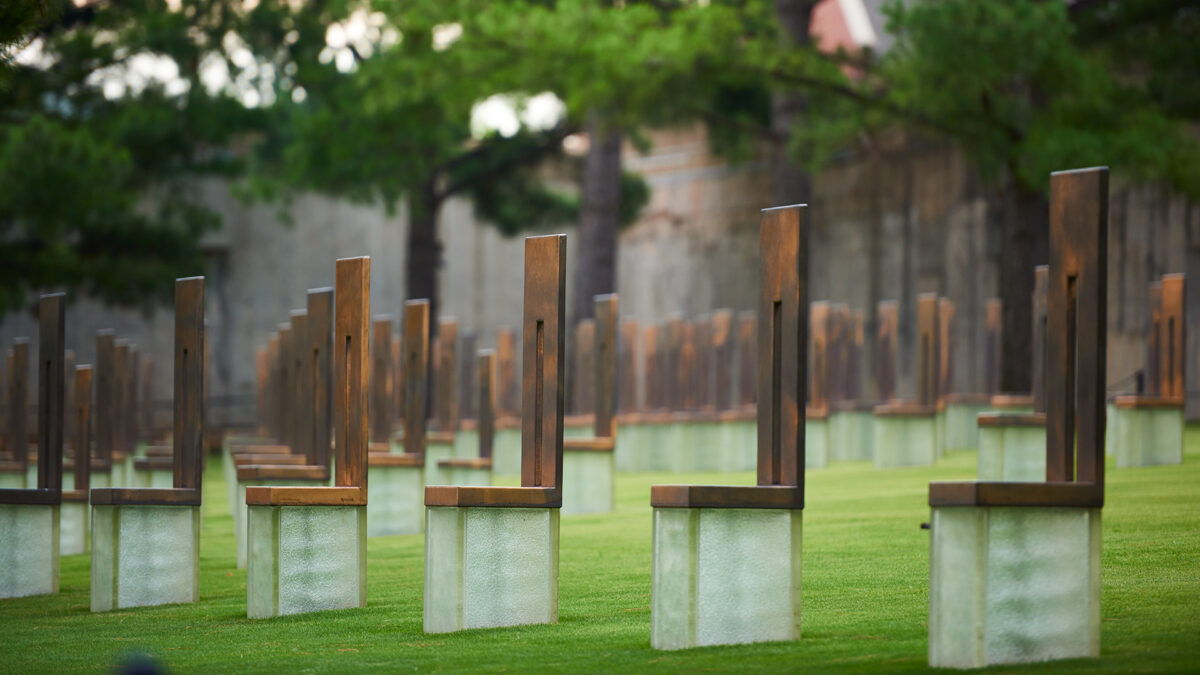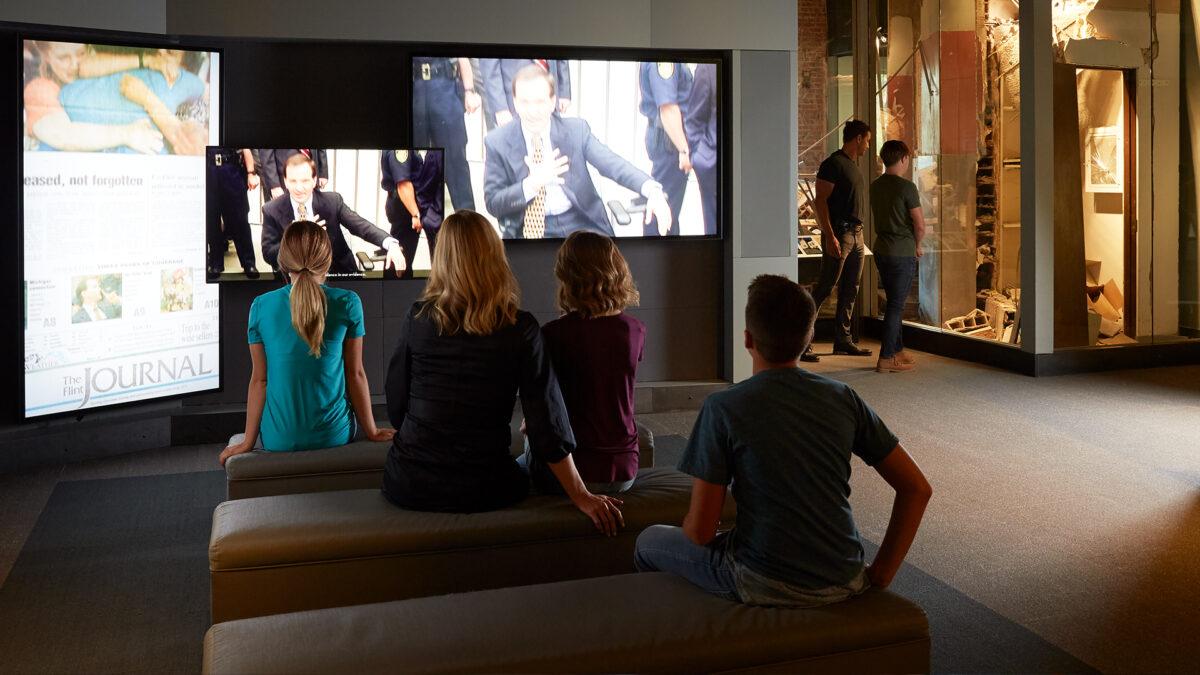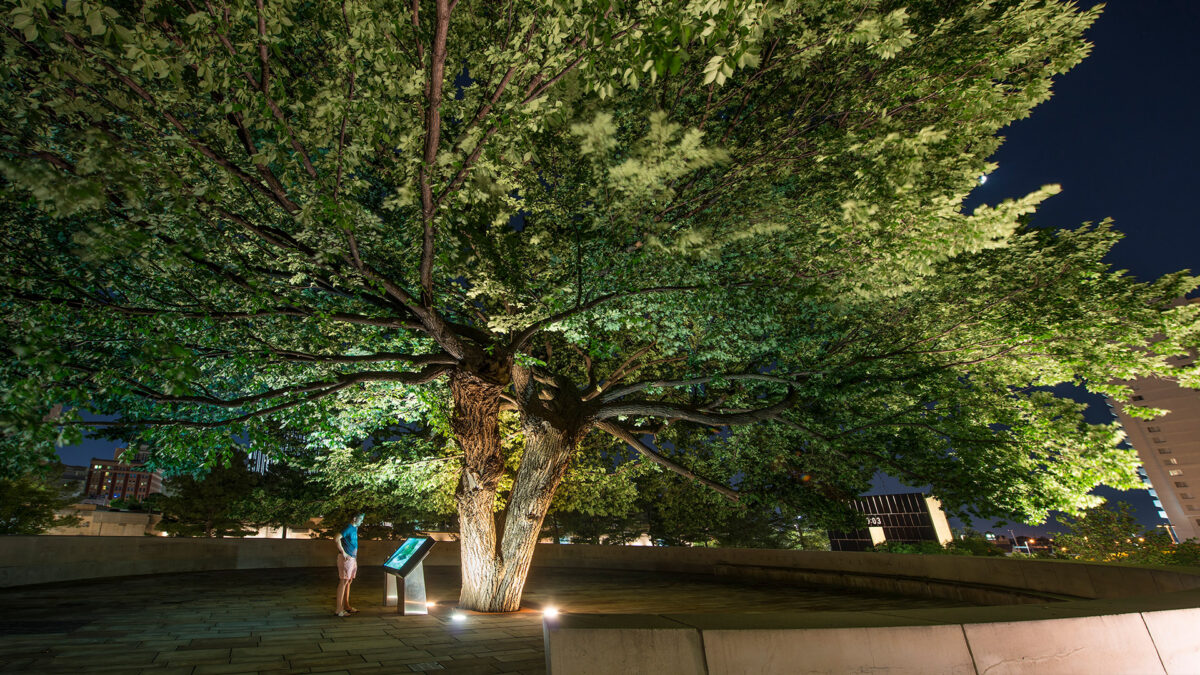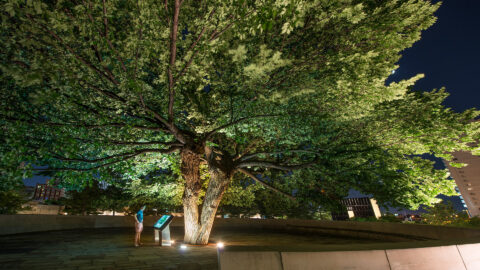The Meaning Behind It All
The Memorial and Museum’s Creation
We come here to remember those who were killed, those who survived and those changed forever. May all who leave here know the impact of violence. May this memorial offer comfort, strength, peace, hope and serenity.®

Like the response to the event it was meant to commemorate, the creation of the Oklahoma City National Memorial has been a cooperative effort involving many people and all levels of government. In 1995, Oklahoma City Mayor Ron Norick appointed a 350-member task force to explore ways to remember this tragic event and honor those killed. In March 1999, the task force issued its report. In the Memorial Mission Statement, the Task Force called for the creation of a memorial to remember those who were killed, those who survived and those changed forever – in short, all who were touched directly or indirectly by the bombing.
The Task Force also called for these major components
- In September 1996, the Task Force became the Oklahoma City National Memorial, a private 501(c)(3) dedicated to fulfilling that mission. From the very beginning, committees were drawn from the families of those who were killed in the bombing, survivors, first responders and volunteers who participated in the rescue and recovery efforts, and community volunteers.
- The Outdoor Symbolic Memorial was dedicated on April 19, 2000, the fifth anniversary of the bombing. President William J. Clinton joined more than 20,000 people to dedicate the site. Less than a year later, President and Mrs. George W. Bush dedicated the Memorial Museum on Presidents’ Day, February 19, 2001.
The Oklahoma City National Memorial & Museum is comprised of two distinct but eternally interwoven parts
The Outdoor Symbolic Memorial is a place of quiet reflection. It honors those who were killed, those who survived and those changed forever on April 19, 1995. It encompasses the now-sacred soil where the Murrah Building once stood, as well as the surrounding area devastated by the attack. The Memorial is open to all 24 hours a day, year-round.

The Memorial Museum is an interactive learning experience that occupies the west end of the former Journal Record Building. Built in 1923, this building withstood the bombing. The state-of-the-art Memorial Museum takes visitors on self-guided tours through the story of those who were killed, those who survived and those changed forever by the April 19, 1995, bombing of the Alfred P. Murrah Federal Building – as well as the world’s response in its aftermath. The Museum uses interactives and augmented reality as well as hundreds of hours of video and artifacts to show visitors each personal detail. Museum Admission maintains the outdoor Memorial.

The Oklahoma City Memorial Marathon
In 2001, the inaugural Oklahoma City Memorial Marathon was held on the streets and neighborhoods of Oklahoma City. Fewer than 5,000 participated that year, but 20 years later, around 25,000 runners come from across the globe to #RUNtoREMEMBER.

The annual event has become a much-anticipated gathering celebrating life, unity, remembrance and resilience. Funds raised through the Memorial Marathon also help to support Memorial and Museum operations.
Organization and Operations
The former Journal Record Building – which suffered severe bombing damage – is listed on the National Register of Historic Places and is now home to the Memorial Museum, as well as serving as the base of operations for Memorial, Museum and Marathon staff.
Both the Memorial and Museum are maintained and operated by the Oklahoma City National Memorial Foundation, a private non-profit organization.
The Oklahoma City National Memorial & Museum does not receive any annual operating funds from the federal, state or local government. Museum admissions, store sales, the OKC Memorial Marathon, earnings from an endowment and private fundraising allow the Memorial and Museum to be self-sustaining.



